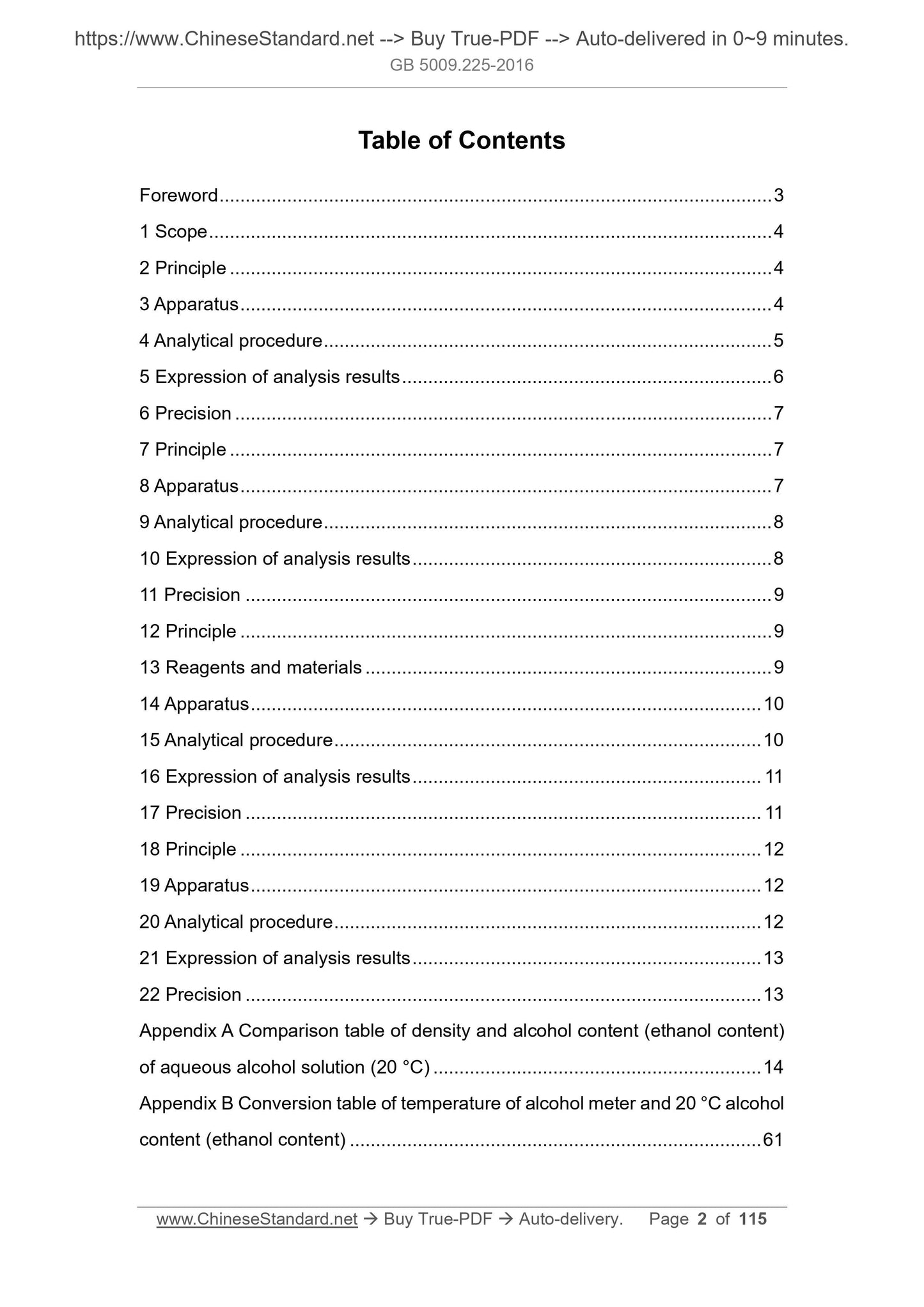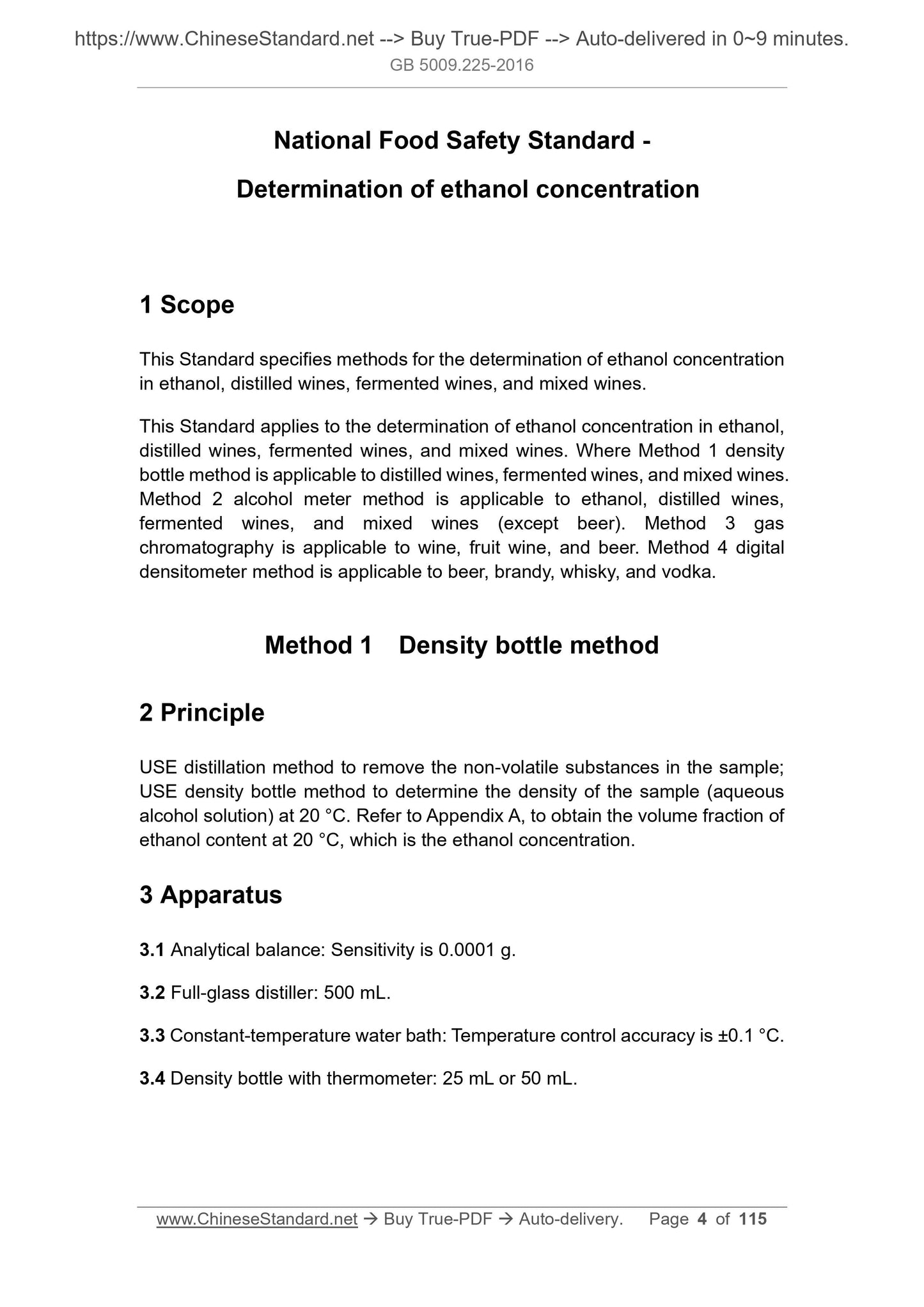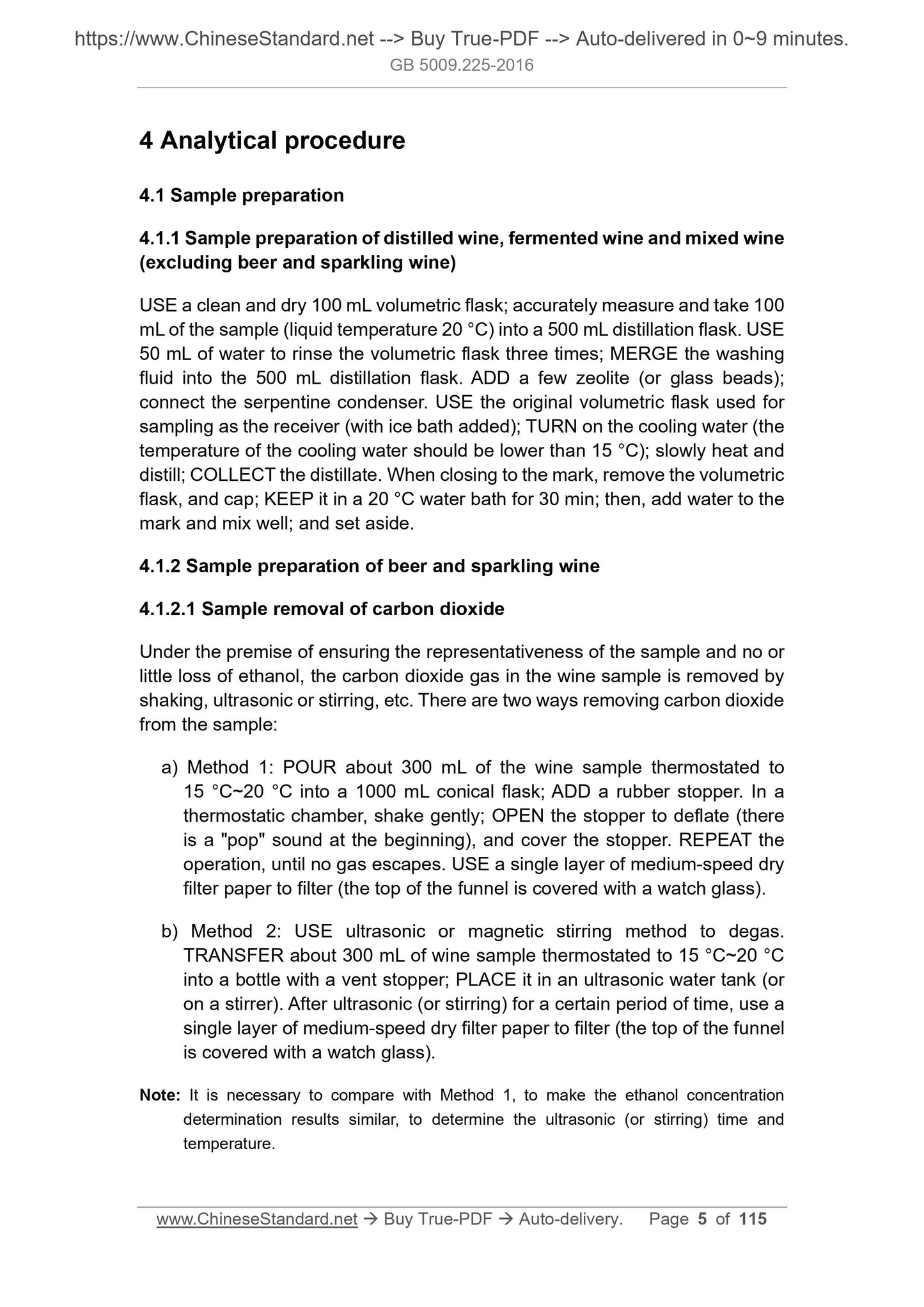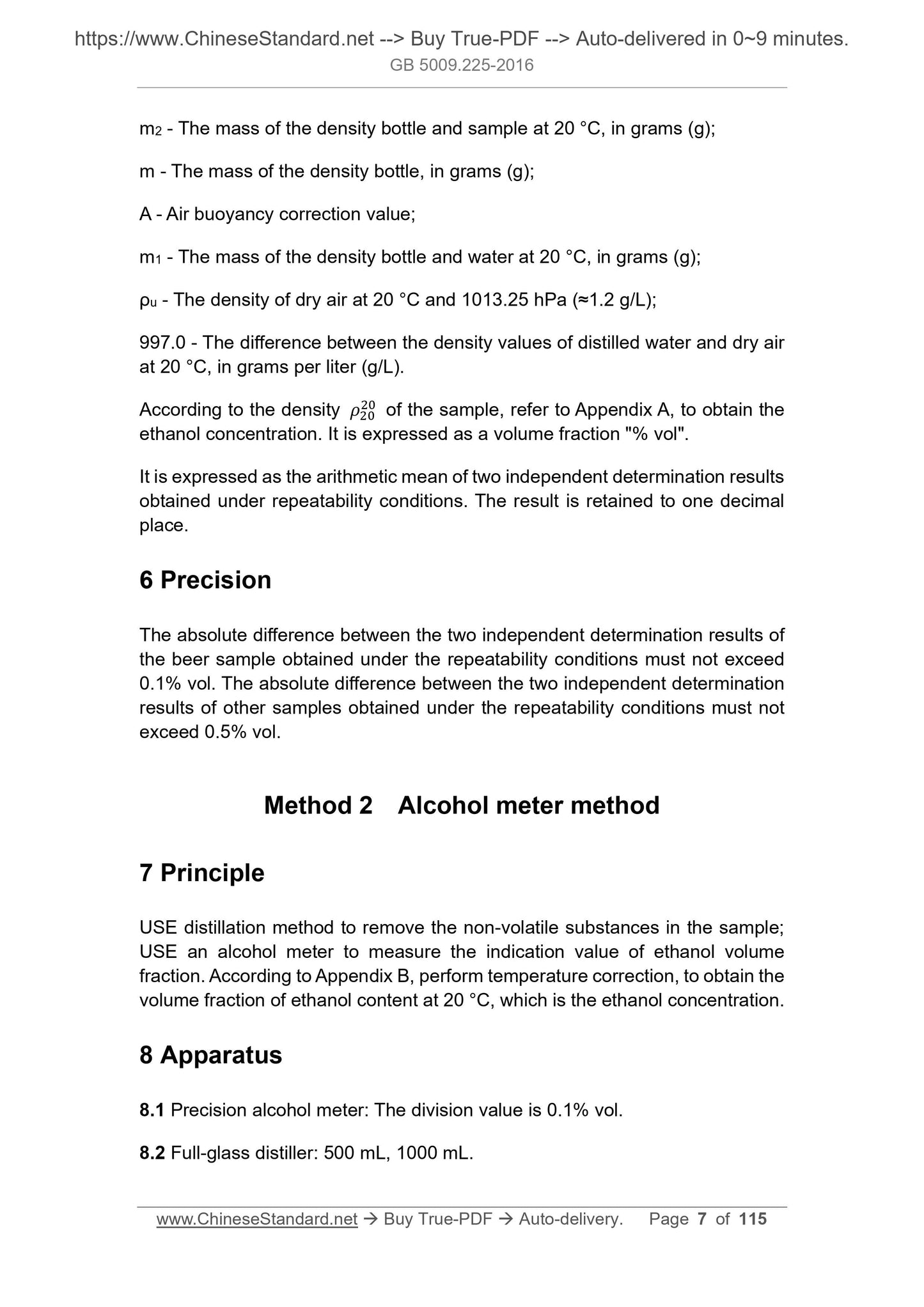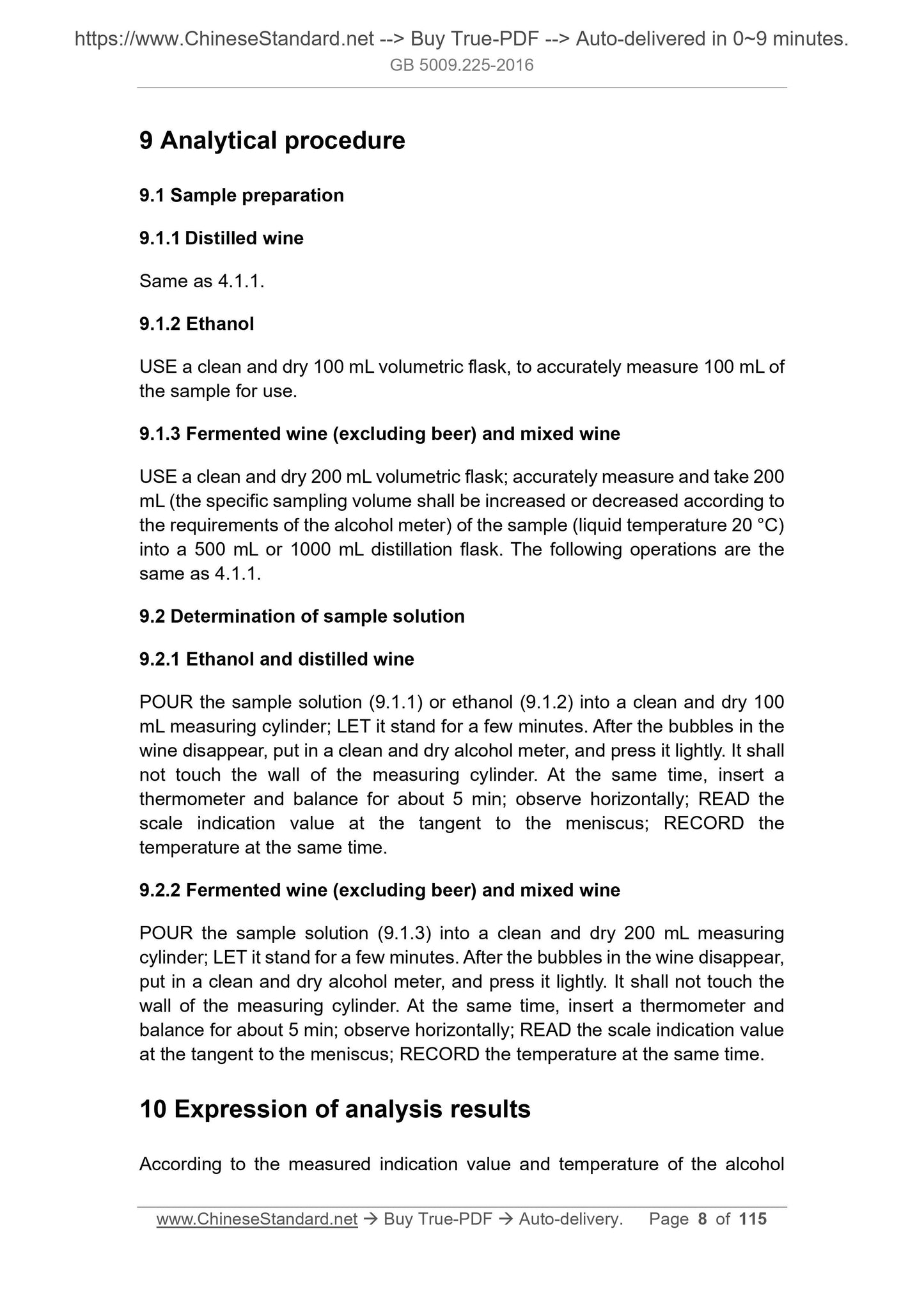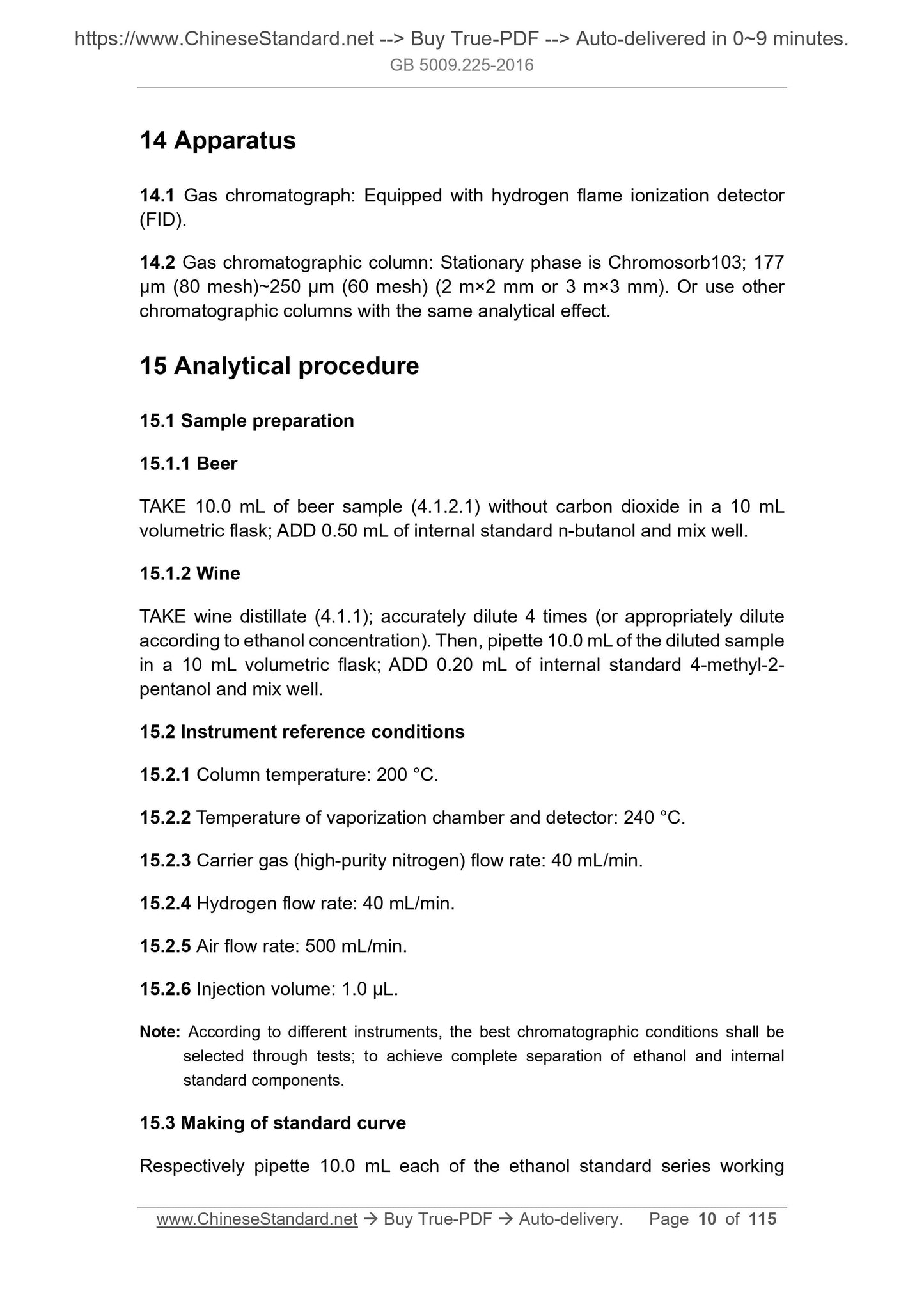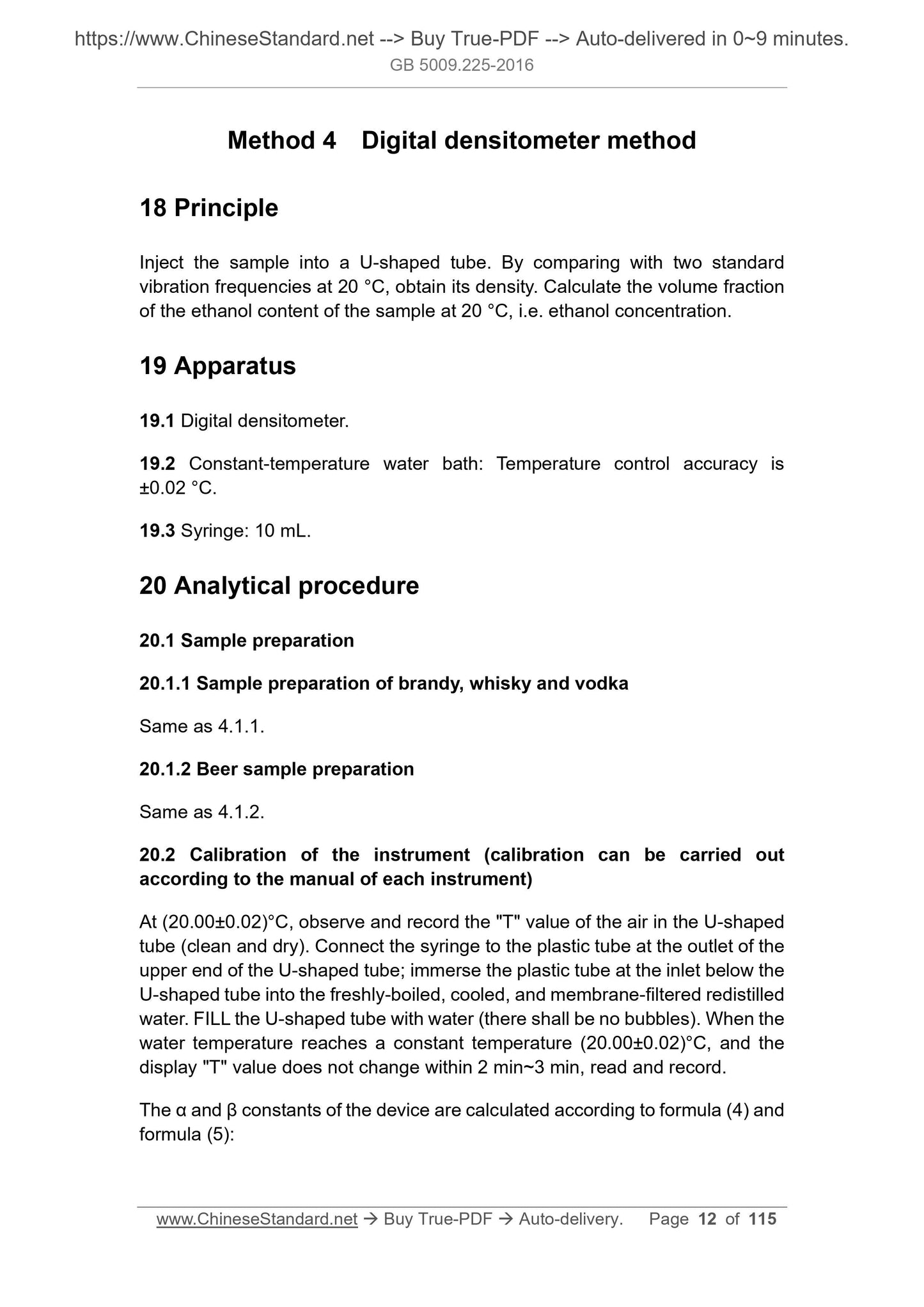1
/
of
8
www.ChineseStandard.us -- Field Test Asia Pte. Ltd.
GB 5009.225-2016 English PDF
GB 5009.225-2016 English PDF
Regular price
$1,310.00
Regular price
Sale price
$1,310.00
Unit price
/
per
Shipping calculated at checkout.
Couldn't load pickup availability
GB 5009.225-2016: National Food Safety Standard -- Determination of ethanol concentration
Delivery: 9 seconds. Download (and Email) true-PDF + Invoice.Get Quotation: Click GB 5009.225-2016 (Self-service in 1-minute)
Newer / historical versions: GB 5009.225-2016
Preview True-PDF
Scope
This Standard specifies methods for the determination of ethanol concentrationin ethanol, distilled wines, fermented wines, and mixed wines.
This Standard applies to the determination of ethanol concentration in ethanol,
distilled wines, fermented wines, and mixed wines. Where Method 1 density
bottle method is applicable to distilled wines, fermented wines, and mixed wines.
Method 2 alcohol meter method is applicable to ethanol, distilled wines,
fermented wines, and mixed wines (except beer). Method 3 gas
chromatography is applicable to wine, fruit wine, and beer. Method 4 digital
densitometer method is applicable to beer, brandy, whisky, and vodka.
Method 1 Density bottle method
Basic Data
| Standard ID | GB 5009.225-2016 (GB5009.225-2016) |
| Description (Translated English) | National Food Safety Standard -- Determination of ethanol concentration |
| Sector / Industry | National Standard |
| Classification of Chinese Standard | C53 |
| Word Count Estimation | 108,187 |
| Date of Issue | 2016-08-31 |
| Date of Implementation | 2017-03-01 |
| Older Standard (superseded by this standard) | GB/T 4928-2008 Partial; GB/T 13662-2008 Partial; GB/T 11858-2008 Partial; GB/T 11857-2008 Partial; GB/T 11856-2008 Partial; GB/T 10345-2007 Partial; GB/T 15038-2006 Partial; GB/T 394.2-2008 Partial; GB/T 5009.48-2003 Partial |
| Regulation (derived from) | State Health and Family Planning Commission Notice No.11 of 2016 |
| Issuing agency(ies) | National Health and Family Planning Commission of the People's Republic of China, State Food and Drug Administration |
Share

